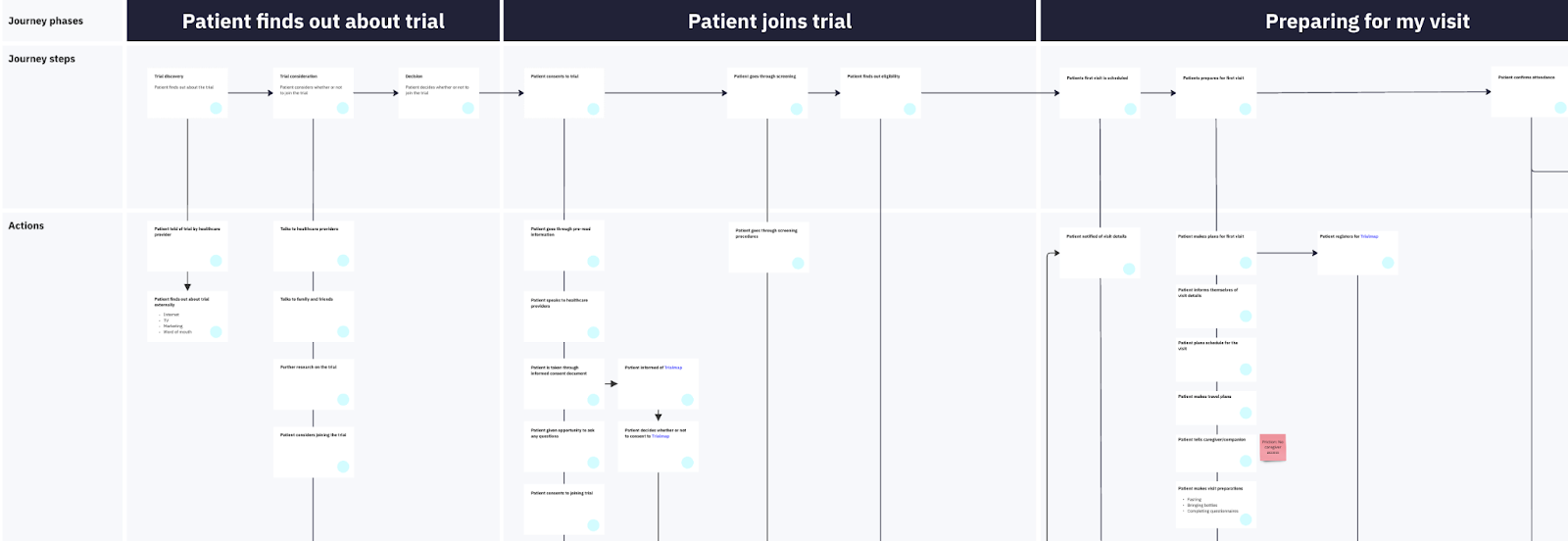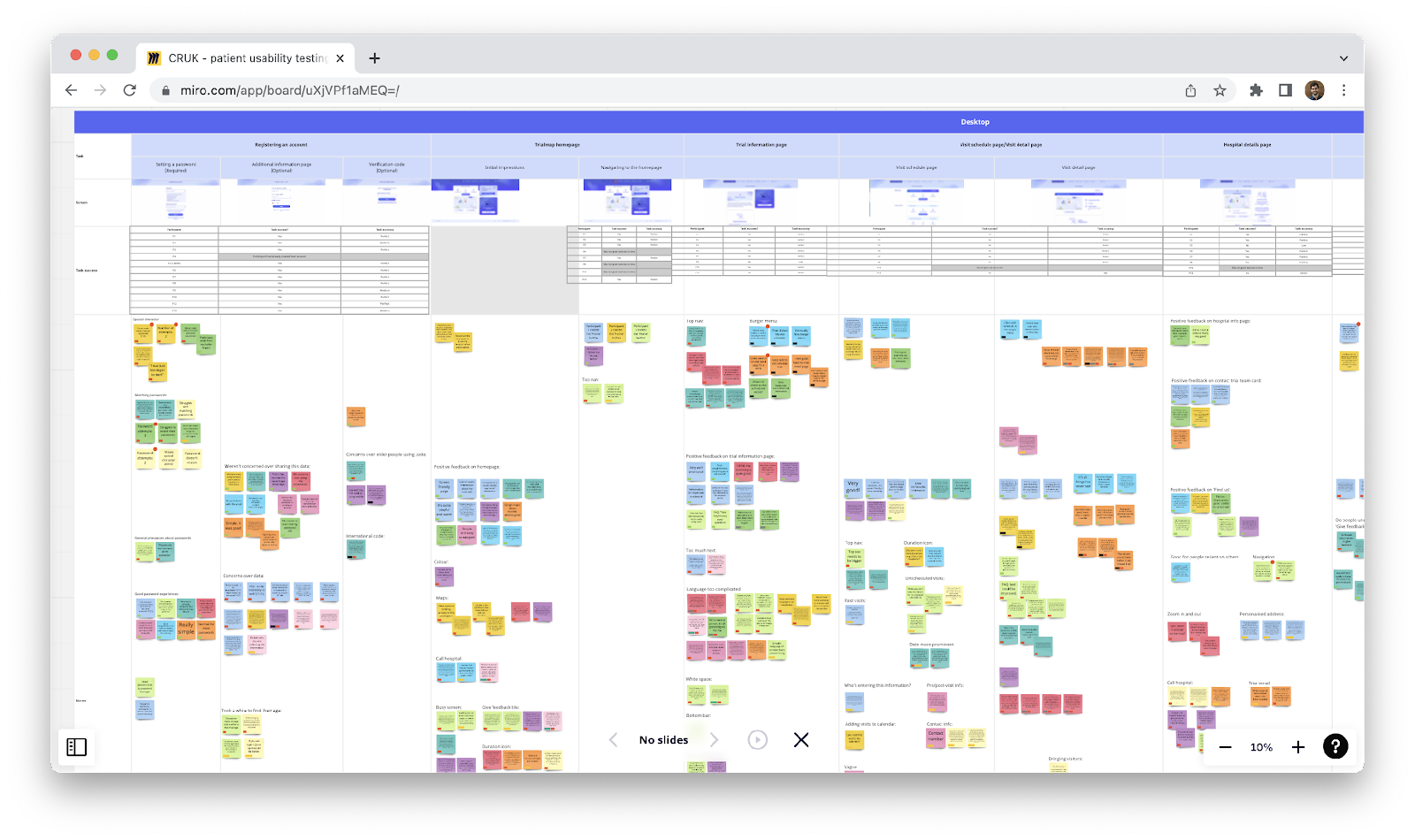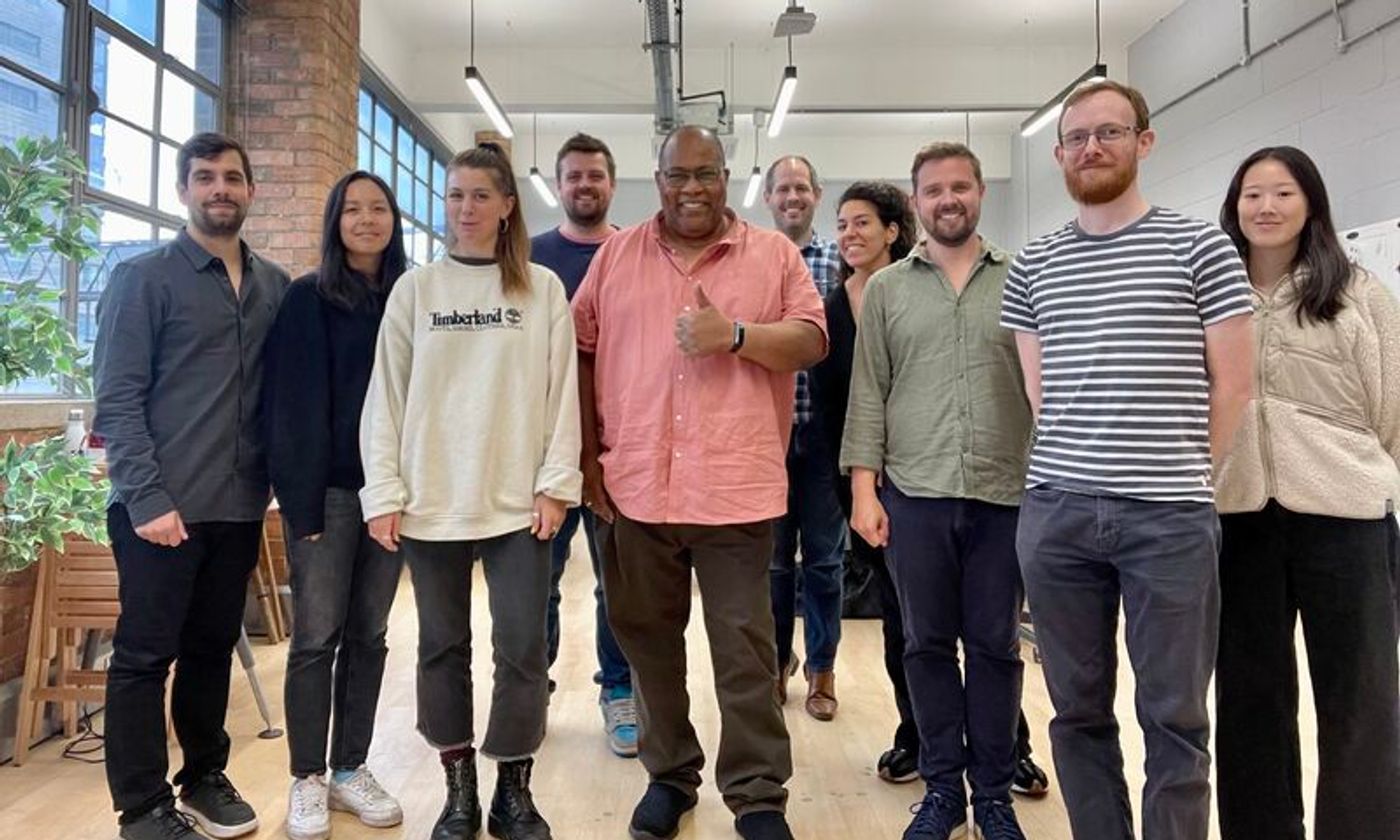At Stitch, our mission is to understand and improve the patient experience on clinical trials, making them a partner in the trial process. We take exactly the same approach with how we design our technology, involving the patient throughout the entirety of our product development process. Deeply understanding and listening to patients when designing for them leads to better results. Here’s how we do this.
Start with listening and understanding
It’s important to recognise that as technology providers, we are not patients. No matter how hard you try, if you have not experienced it yourself, you will never fully understand what it’s like to be a cancer patient on a Phase 1 oncology trial. It’s best to put biases and assumptions to the side and sincerely listen to what patients have to say.
Research techniques such as one-on-one interviews, contextual inquiry and field studies give the forum for patients to share their rich lived experience in detail. When conducting research, we make sure to speak to a representative and diverse group of patients so that our research is accurate and inclusive of as many perspectives as possible.
The TEDW framework is a powerful technique we use in user interviews to encourage open conversation.
TEDW stands for:
- “Talk me through” or “Tell me more”
- “Explain why” or “Explain how”
- “Describe why” or “Describe how”
- “Walk me through”
As user researcher Nikki Stanier describes:
“Instead of asking people direct questions, you are using active listening and open-ended statements to extract the stories from them. Using this technique makes it a lot easier for participants to give you reliable past data, as it reduces biases that come through in research.”
Not only do patients feel heard, it means the solutions we develop are more accurate and cater to the complex needs and challenges of patients on trial.
Involve, empathise then ideate
After conducting that initial research, it’s important that this rich detail is distributed across the team so everyone can understand the nuances and complexities of what patients experience in clinical trials.
At Stitch, we recently ran a service blueprinting workshop with our team, mapping out the journey of a patient on trial and all the systems and stakeholders in place that make that journey possible. This exercise helped us empathise with patients, and created a space for us to identify key problem areas that we could tackle as a company, resulting in the generation of patient-centric product solutions.

Test and iterate
Once you have your solutions, it’s important to involve the patient in the design process so you can ensure that what you build is usable and valuable to patients. We conduct usability testing and content testing with patients to uncover improvements we can make prior to release. When recruiting and conducting these research activities, it’s important to ensure that these processes are representative, diverse and also accessible, so that you are allowing and including those with access needs to be able to participate.
In our usability testing sessions with our partners CRUK, patients shared with us 62 unique pieces of feedback about our product. Our team was able to rapidly respond and integrate the feedback into our product. This process ensures we deliver the best possible experience for patients who are using our technology on trial.

Continuous improvement
The research doesn’t stop once the product is in the hands of patients. Feedback is crucial, both in clinical trials and in our product. We keep a close eye on quantitative and qualitative feedback from patients using our technology so we know how to better support patients on trial. Keeping a close relationship with patient advocates and advocacy groups also keeps us engaged and up to date with what patients are saying. The picture at the top of the page is our team with patient advocate Alfred Samuels, who we are grateful to for sharing his incredible story with us!
If you are interested in hearing more about our patient first approach at Stitch, don’t hesitate to reach out to us here.


 © 2025 Stitch Health Ltd.
© 2025 Stitch Health Ltd.